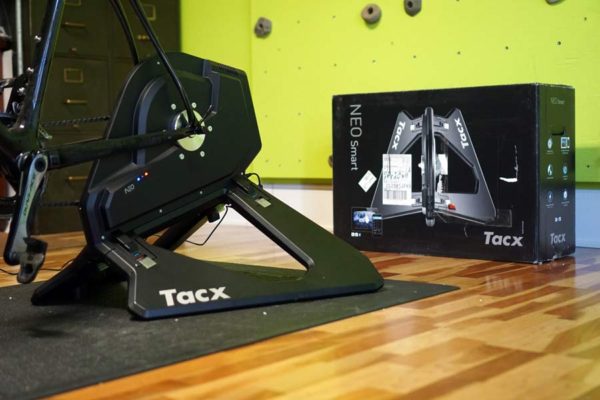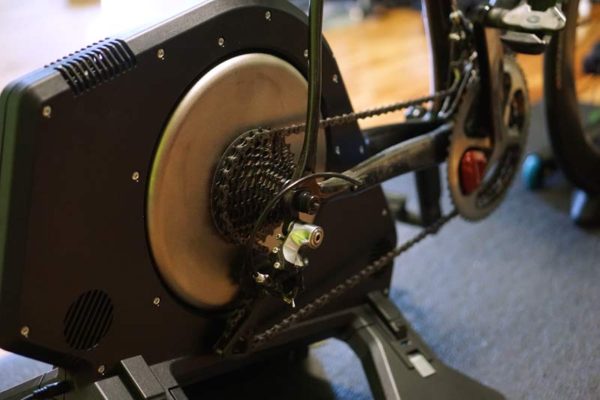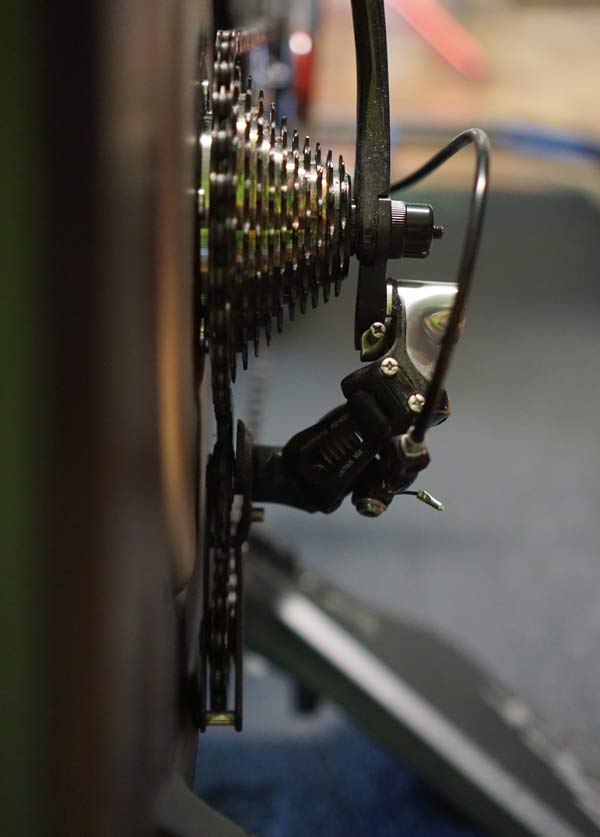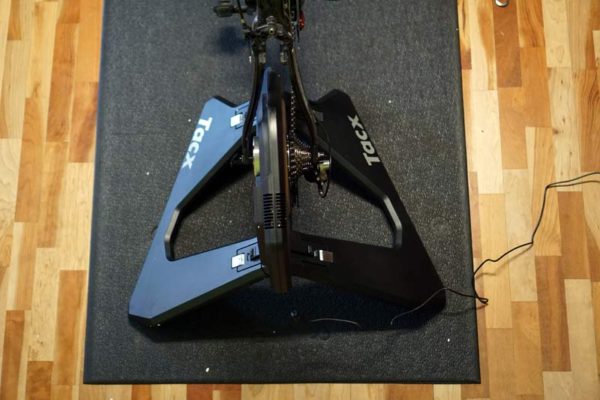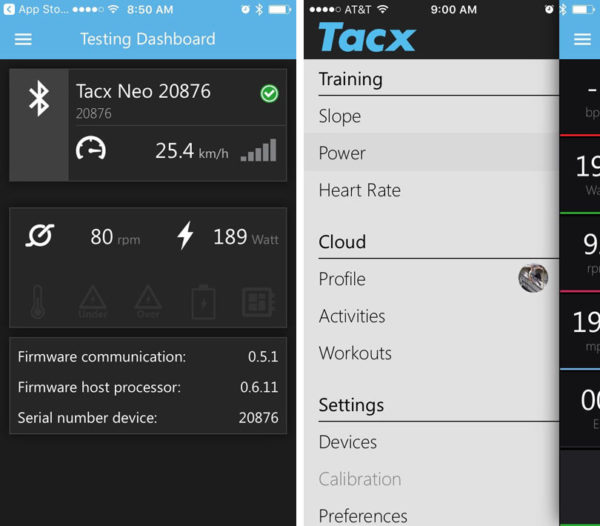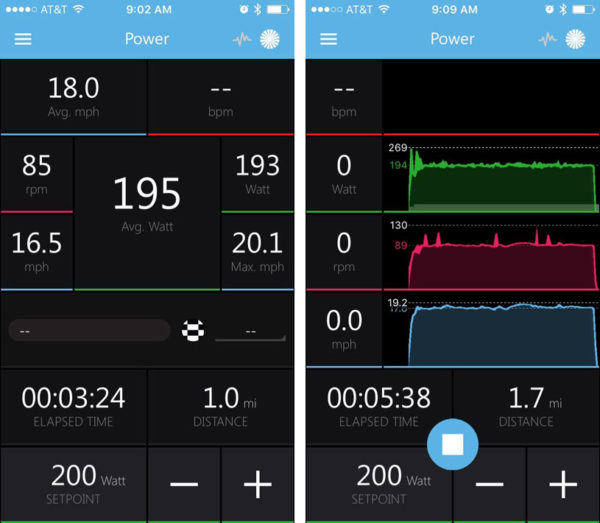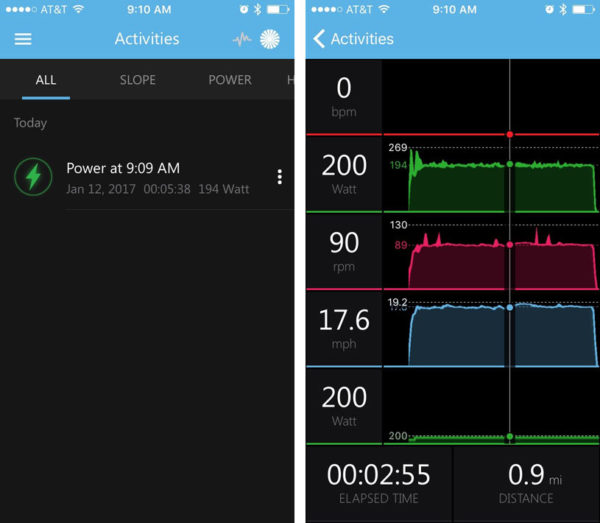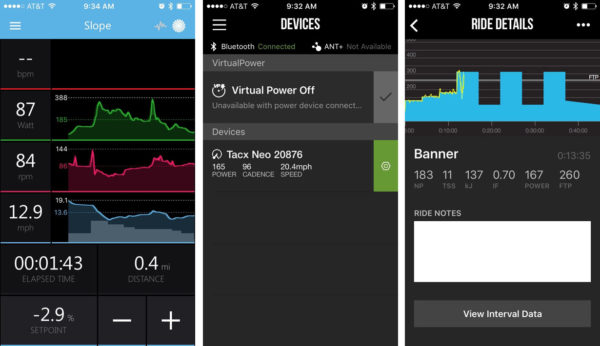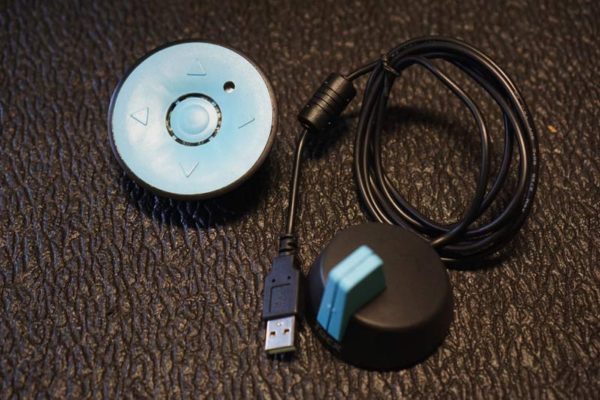There’s a battle for the online training entertainment king, but to take full advantage of Zwift, The Sufferfest, TrainerRoad, Bkool or any of the others, you need a smart trainer. One that’s capable of syncing with the services and adjusting the output to match what’s on the screen…whether that’s a 3D rendered world or cold, hard numbers designed to make you fast. The Tacx NEO Smart delivers on that with some cool features (like NOT needing to be plugged in!) and easy connectivity that make it worth a look. Scroll on down for first impressions and tech…
Video above shows unboxing, setup and ambient noise when riding the trainer. Note the down-facing light that indicates output level.
First things first: It’s pronounced “tacks”. Included in the box are a front wheel block, spacers for 10- and 11-speed cassettes, lockings for 11T and 12T cassettes, and a spacer for 135mm rear axle spacing (disc brake equipped bikes; thru axle adapters sold separately). The cassette is not included, but you can pick up a low end one pretty cheap in either 10sp or 11sp. Mine came with the European plug, but a North American version is also available (the white adapter is my own). Key features are:
- 2,200 watts max resistance
- 25% slope
- ~1% accuracy
- Measures speed, power and cadence
- Road Feel (mimics the feel of gravel, cobbles, trails, etc.)
- Direct drive (no belt or transmission)
- Downhill Drive (powers the wheel for simulated downhills)
- Self powered as soon as you start riding
Yes, you read that last one correctly. You don’t need to plug the NEO Smart in to have it work. Once you start pedaling, it’s on, and it’s able to communicate wirelessly with your devices and training programs to control resistance and transmit your power output. The only feature that requires power is Downhill Drive so that it can power the motor when coasting.
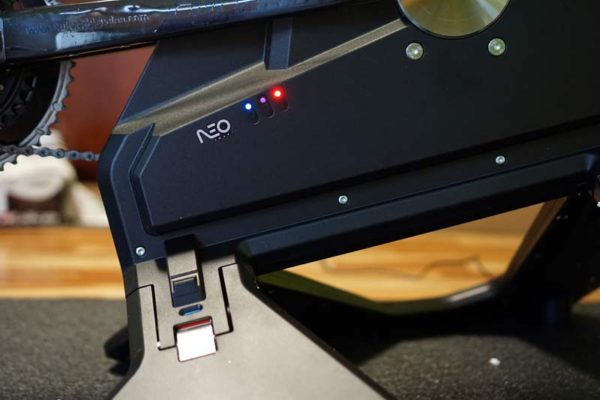
Once you stop pedaling, there’s no power, so it needs to be plugged in to keep the communication open and spin the motor if you’re virtual training has some descents. A capacitor or something would be a nice addition to allow for at least minute or two of continued power just to keep the signal going, but it reconnects instantly as soon as you start pedaling again. The benefits of this self powering design far outweigh that minor niggle…you can take this trainer anywhere and use it (think pit warmups, travel, etc.). This feature alone should put it at the top of the list, but it gets better.
Another great feature is the noise level…or lack there of. It’s very quiet, on par or even better than some fluid trainers. That makes it easy to watch your stories on the big screen or carry on a conversation.
Compared to the Wahoo KICKR, which I reviewed a couple years ago, the Tacx NEO Smart reacts more slowly to power changes. With the KICKR, when TrainerRoad switches from low intensity to high (say, 130 watts to 200 watts), the change in resistance is around two seconds. The NEO Smart seems to take more like 8-10 seconds, which at first left me wondering if it was going to change, but it does, it’s just less abrupt. Honestly, there are pros and cons to both…very short intervals (10-20 seconds) are going to be harder to do on the Tacx, but for longer ones, it eases you into it for a more natural progression.
One minor nitpick: My Dura-Ace 9000 rear derailleur’s pulley cage touches the frame when in the largest cog. It doesn’t touch the trainer’s flywheel, and it doesn’t impede shifting into that gear, so it doesn’t actually affect performance, but worth pointing out. Other note: You’ll need a chain whip to install your own cassette since the flywheel spins in both directions.
The base fills a 575x750mm (22.6×29.5 in) footprint, which gives it a good platform, but there’s just enough sway built in the overall design that keeps it feeling more like outdoor riding. Really aggressive sprints can wobble it slightly, but it didn’t feel precarious. The legs fold up like the Tydirium Shuttle, making it almost small enough to slide behind a couch.
There are a few features I haven’t tested yet. Via the app, I set the trainer to negative slope to get the Downhill Drive working, and it does indeed move the flywheel forward for you, but I haven’t tested it in a virtual training environment yet. That means I haven’t activated Road Feel yet either, but their video (above) shows what it’s all about.
Tacx provides two free smartphone apps. The Tacx Utility (left), which simply allows for firmware updates and testing the communication, and the Tacx Training (right), which lets you perform basic user-controlled workouts. You’ll need to quit one app before using the other…it didn’t like having both running at the same time and wouldn’t show numbers in the training app if the utility app had been launched first. It gives you three ways to control resistance: Slope, Power and Heart Rate. I’ve tested Slope and Power, shown below:
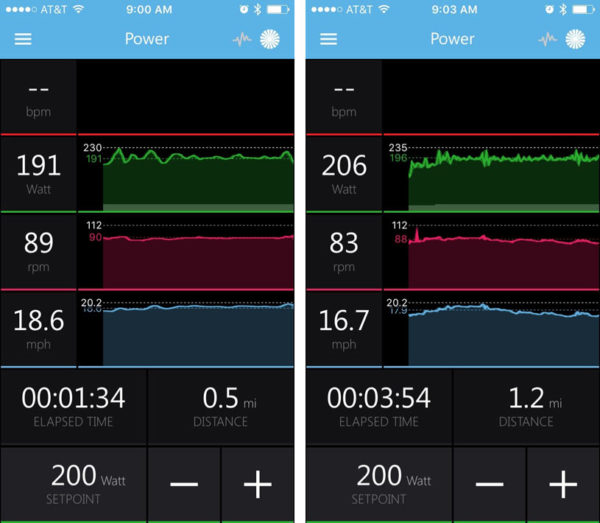
As soon as you start riding, it gives you the option to start the workout. In Power mode, you set the desired resistance in Watts and it keeps it resisting you at that level regardless of cadence. Pedal slower and it’ll feel harder. Pedal faster and it’ll seem easier, but the wattage remains consistent. As mentioned, the speed of change is on the slow side, so if you spool up from 80rpm to 100rpm, it’ll take a few seconds to catch up, so you’ll see a wavier line representing your performance. Also, the +/- buttons are surprisingly hard to hit accurately when riding hard…they should be bigger.
With the graphs, you’ll see a max output line above the graph, which gets another line that’s your average for your workout. The numbers represent real time, and the line lets you see where that is above or below your workout average. Swipe left and you’ll see a dashboard rather than graphs (left). Stop riding and it’ll coast down to zero, then offer up a “Stop” button after a couple seconds. Or just start riding again and it’ll resume on its own.
Hit “Stop” and it asks if you want to save the workout, which will then be listed under your saved workouts. Click on a past workout and you’ll see an overview (right) that you can slide across to see your output at any given point within the workout.
The Slope workouts (left) simply let you adjust the virtual incline that you want to ride and it creates resistance to match. You’ll need to enter your body weight and bike weight into the app’s settings so it can create realistic numbers.
I also tested with TrainerRoad (center, right), which easily found the trainer and connected via Bluetooth. I only did a partial workout on it just to test, and it worked the same as with the Wahoo, only slower to react as mentioned.
First impressions are very good. It’s solid, connects easily and has a few standout features on top of doing everything expected from a smart trainer. Retail is $1,499 USD (€1,399). That’s a few hundred bucks more than many competing units, but not needing a dummy trainer for outdoor warmups or travel might make up for that.
Available separately is the Upgrade Smart package (€179), which includes their Tacx Trainer Software, handlebar-mounted remote control and USB ANT+ antenna for your laptop. From there, you can download training programs or run their DVD/Blu-ray discs to simulate various rides and mix up the training.
